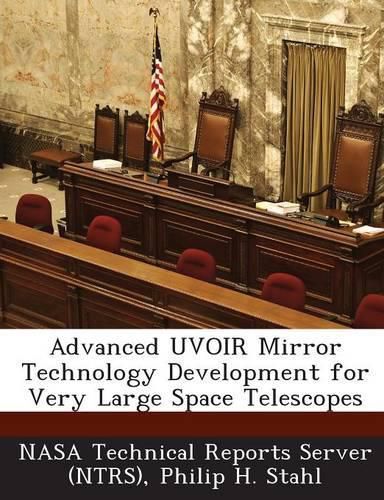Readings Newsletter
Become a Readings Member to make your shopping experience even easier.
Sign in or sign up for free!
You’re not far away from qualifying for FREE standard shipping within Australia
You’ve qualified for FREE standard shipping within Australia
The cart is loading…






Objective of this work is to define and initiate a long-term program to mature six inter-linked critical technologies for future UVOIR space telescope mirrors to TRL6 by 2018 so that a viable flight mission can be proposed to the 2020 Decadal Review. (1) Large-Aperture, Low Areal Density, High Stiffness Mirrors: 4 to 8 m monolithic & 8 to 16 m segmented primary mirrors require larger, thicker, stiffer substrates. (2) Support System: Large-aperture mirrors require large support systems to ensure that they survive launch and deploy on orbit in a stress-free and undistorted shape. (3) Mid/High Spatial Frequency Figure Error: A very smooth mirror is critical for producing a high-quality point spread function (PSF) for high-contrast imaging. (4) Segment Edges: Edges impact PSF for high-contrast imaging applications, contributes to stray light noise, and affects the total collecting aperture. (5) Segment-to-Segment Gap Phasing: Segment phasing is critical for producing a high-quality temporally stable PSF. (6) Integrated Model Validation: On-orbit performance is determined by mechanical and thermal stability. Future systems require validated performance models. We are pursuing multiple design paths give the science community the option to enable either a future monolithic or segmented space telescope.
$9.00 standard shipping within Australia
FREE standard shipping within Australia for orders over $100.00
Express & International shipping calculated at checkout
Stock availability can be subject to change without notice. We recommend calling the shop or contacting our online team to check availability of low stock items. Please see our Shopping Online page for more details.
Objective of this work is to define and initiate a long-term program to mature six inter-linked critical technologies for future UVOIR space telescope mirrors to TRL6 by 2018 so that a viable flight mission can be proposed to the 2020 Decadal Review. (1) Large-Aperture, Low Areal Density, High Stiffness Mirrors: 4 to 8 m monolithic & 8 to 16 m segmented primary mirrors require larger, thicker, stiffer substrates. (2) Support System: Large-aperture mirrors require large support systems to ensure that they survive launch and deploy on orbit in a stress-free and undistorted shape. (3) Mid/High Spatial Frequency Figure Error: A very smooth mirror is critical for producing a high-quality point spread function (PSF) for high-contrast imaging. (4) Segment Edges: Edges impact PSF for high-contrast imaging applications, contributes to stray light noise, and affects the total collecting aperture. (5) Segment-to-Segment Gap Phasing: Segment phasing is critical for producing a high-quality temporally stable PSF. (6) Integrated Model Validation: On-orbit performance is determined by mechanical and thermal stability. Future systems require validated performance models. We are pursuing multiple design paths give the science community the option to enable either a future monolithic or segmented space telescope.